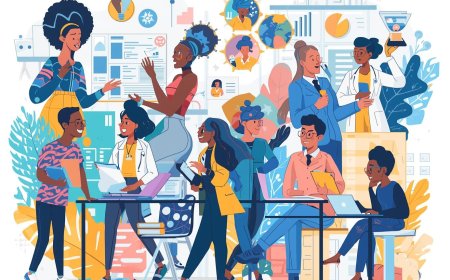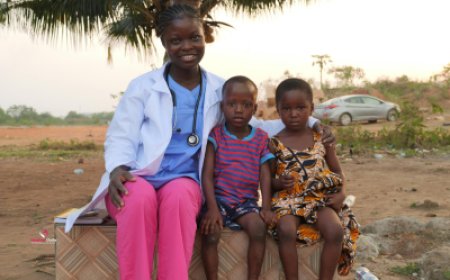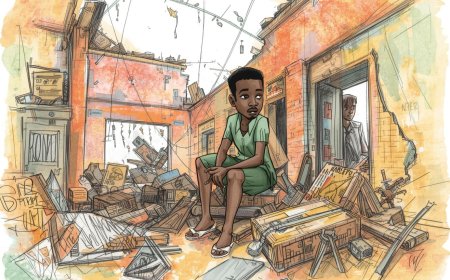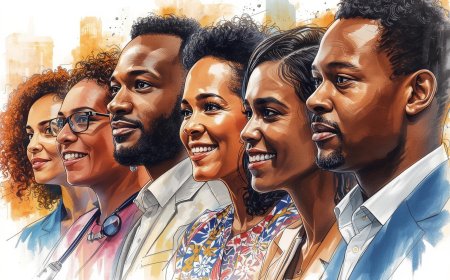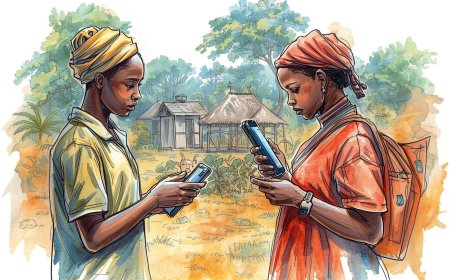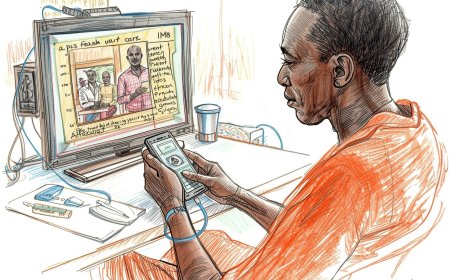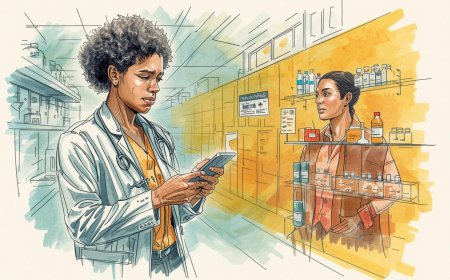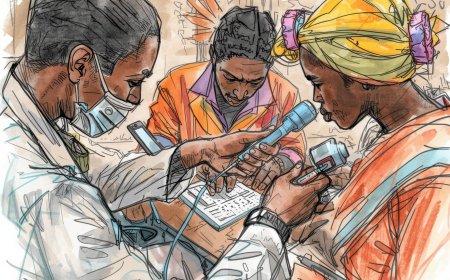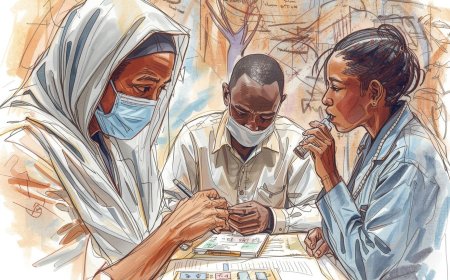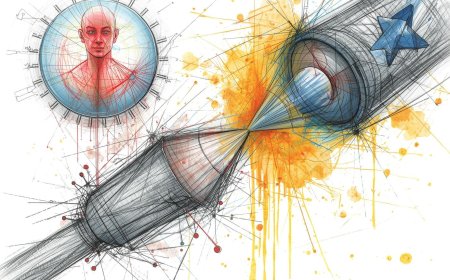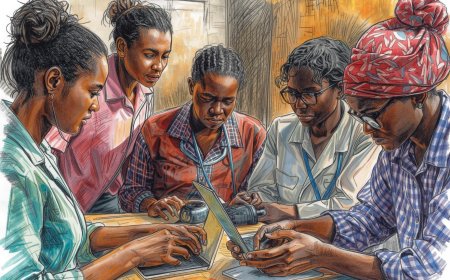The Human Cost of Unethical Storytelling in Medical & Health Innovation
Stories move donors, spark policy, and win awards — but when told without care they re-traumatize people, erase dignity, and do real harm. This Africa-focused, globally relevant guide explains what “ethical storytelling” actually means in health innovation: trauma-informed interviewing, consent that’s meaningful (not a checkbox), image & editing rules, data-privacy law basics (Kenya, South Africa, Nigeria examples), compensation and benefit-sharing, community approval, editorial governance, and an operational checklist teams can use immediately. Includes real-world anecdotes, sample consent language, and APA citations with live links.
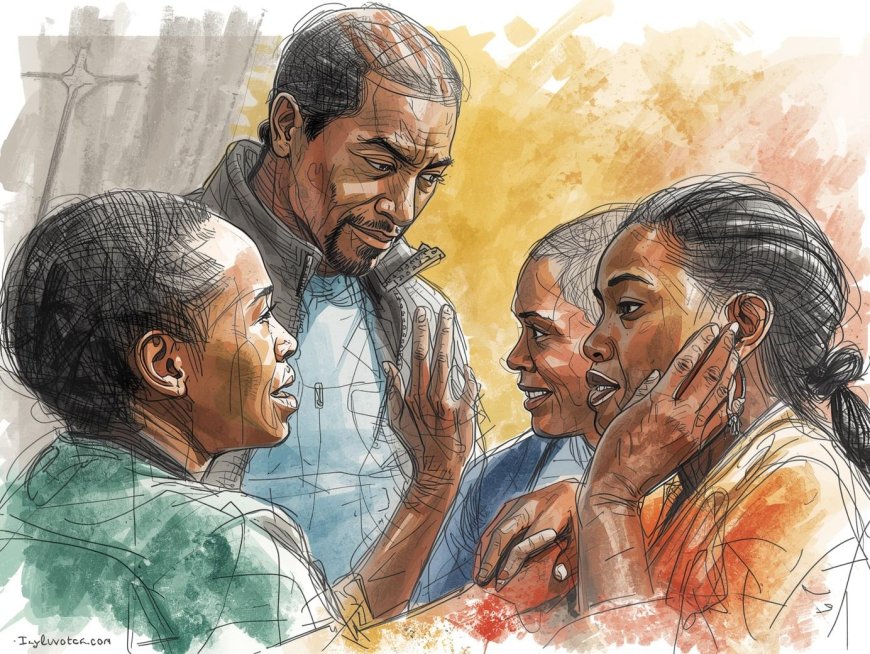
Short brief: A great impact story can unlock funding and attention — but every photo, quote, and headline also changes lives. In African settings (and beyond) poor storytelling choices have quiet but serious consequences: re-traumatisation of interviewees, community stigma, policing of vulnerable people, and legal harms under data-protection laws. This practical, action-focused guide explains what teams must do differently — from project design to distribution — so your storytelling helps people instead of hurting them.
Why this matters: donors, startups and universities routinely ask for human stories to justify investment. If those stories are gathered and edited without trauma-informed care, robust consent, cultural humility and legal safeguards, the “impact” you report can create real-world harm for the people represented. The fix is practical and achievable.
Opening vignette (real-world, sadly common)
An NGO filmed a woman describing a home birth so movingly that a donor made a six-figure grant. Months later the woman’s community ostracised her after the video circulated — neighbours labelled her “reckless” and a local employer fired a relative who was seen in the footage. The NGO had a signed release, but no follow-up support, no translation of the consent into the woman’s language, and hadn’t discussed distribution channels. The result: a grant and a harmed life. Ethical storytelling would have prevented this.
The core harms — what “unethical storytelling” actually does
-
Re-traumatisation: asking survivors to relive traumatic events without supports triggers harm. (Psychological cost.) New America
-
Loss of agency: editing out a person’s voice or altering context robs them of voice and meaning. Amazon Web Services, Inc.
-
Stigma & stereotyping: portraying communities as only “poverty” or “victim” flattens identity and can reduce long-term dignity and funding for non-stigmatizing programmes. educationcannotwait.org
-
Privacy & legal risk: images and stories are personal data under many African laws; misuse can be unlawful and damaging. (Kenya, South Africa, Nigeria examples below.) Kenya Law+2POPIA+2
-
Economic harm & exploitation: unpaid use of people’s stories while organisations reap funding is extractive and unethical. DRNC
(If a story makes money or gets grants, ask: who benefited, and who paid the cost?)
Principles you must follow (short, non-negotiable)
-
Do no harm (ask “could this hurt the subject?”). unicef.org
-
Informed, voluntary & ongoing consent — not legalese: consent is a process, not a tick-box. Amnesty International+1
-
Trauma-informed methods — prepare, warn, offer support, and avoid re-exposure. New America
-
Context & dignity — show people as whole humans, not only problems. educationcannotwait.org
-
Transparency & benefit-sharing — explain how stories will be used, who will see them, and what participants gain. Amazon Web Services, Inc.
-
Legal & data-protection compliance — follow national laws (POPIA, Kenya DPA, NDPR) and platform rules. POPIA+2Kenya Law+2
Practical workflow: how to collect stories ethically (6 steps)
Step 1 — Design with communities, not for them
Invite community leaders and representative voices into early design: what story do they want told? What to never show? Who should review drafts? This isn’t tokenism — it’s practical risk reduction and improves authenticity. educationcannotwait.org
Step 2 — Pre-interview & consent as conversation
Before recording: explain in plain language (local language) who will see the story, distribution channels, edits possible, and withdrawal rights. Offer options: on-camera interview, audio only, anonymised text, blurred image, or no image. Use simple visual consent cards for low-literacy settings. Consent must be revocable within a reasonable time window. Amnesty’s “Let’s Talk About Yes” approach underlines that consent is a dialogue, not a legal formality. Amnesty International+1
Step 3 — Trauma-informed interviewing
-
Train interviewers to recognise distress signs and stop interviews.
-
Provide trigger warnings and offer counseling or referral options.
-
Keep interviews short, with breaks, and let the person control what they disclose and when. WHO and trauma-informed resources emphasise safety and choice. New America+1
Step 4 — Data minimisation & secure handling
Collect only what you need; keep files encrypted; limit access to raw footage to a named small list; delete or securely archive raw material on a schedule; log who accessed files. Follow national data laws (Kenya Data Protection Act, POPIA, NDPR) for personal data and special categories (health status). Kenya Law+2POPIA+2
Step 5 — Editorial review with participants
Share a draft (or stills/transcript) with the storyteller and community representatives before publication. Give them a genuine right to request edits, anonymisation, or withdrawal — and document the outcome. UNICEF and other agencies recommend participant review as standard. educationcannotwait.org
Step 6 — Aftercare & accountability
Follow up after publication: share distribution analytics, anticipate consequences, and provide or fund support if adverse outcomes occur (legal help, relocation, counseling). Good organisations budget for this. Ethical storytelling is a long-term relationship. Amazon Web Services, Inc.
Consent that actually means consent — short template & tips
Use a layered consent approach: (A) Short oral summary before recording; (B) Written/recorded consent; (C) Follow-up confirmation once story is edited.
Sample short script (localise & legal-review):
“Hi, I am [Name] from [Org]. We would like to record your story about [topic]. The recording may be shown to donors, on TV, social media, and in reports. You can choose to: (1) appear on camera with your name; (2) appear but use a different name; (3) have your face blurred; (4) remain anonymous (audio or text only). You may stop the interview or ask us not to use parts of it. If you later change your mind, you can contact [DPO/contact] within [X weeks] to request removal. Do you agree to begin?” Amnesty International+1
Important operational points: record consent (audio) when possible; translate it into local language; log who explained consent and how; specify withdrawal window (e.g., 30 days) and realistic limits (material already widely distributed may be hard to retract — explain this honestly).
Photography & image ethics (practical do’s and don’ts)
Do:
-
Use dignity-preserving framing: eye level, avoid portraying people as objects. educationcannotwait.org
-
Prefer showing agency: people doing things (working, with family), not only suffering. World Health Organization
-
Use consented captions — ask how subjects want to be described. cipit.strathmore.edu
Don’t:
-
Don’t publish identifying images of children, sexual assault survivors, or people in custody without explicit layered safeguards (UNICEF guidelines are strict on children). unicef.org+1
-
Don’t edit images to dramatise (dodgy contrast, removed context) — editing must not change facts. educationcannotwait.org
UNICEF’s “8 Quick Steps to Ethical Imagery” is a practical checklist you should adapt to every campaign. educationcannotwait.org
Language & headlines — avoid the lazy tropes that harm
Common harmful frames: “plight,” “victim,” “crisis,” or headline-first candy that reduces people to poverty or disease. Use person-first language: “people living with [condition]” rather than “[condition] victims.” Editors and comms teams should use style guides that spell out acceptable phrasing. UNICEF and journalistic codes give concrete alternatives. unicef.org+1
Compensation & benefit sharing — fair practice, not transactional charity
Paying participants is ethical when done right (compensation for time, transport, data costs). Avoid “pay-for-grief” incentives that encourage staged stories. Models include: modest cash/airtime, vouchers for services, and community investments (clinic supplies, training) agreed before the story is collected. Be transparent about amounts and keep receipt/record. DRNC
Legal & data privacy snapshot (Kenya, South Africa, Nigeria — practical highlights)
Kenya — Data Protection Act (2019): personal data includes images; special categories (health) need stronger lawful basis and consent; children need parental consent. The Data Protection Office has guidance on journalistic exceptions (drafts) but default to protection. Consult the Office for edge cases. Kenya Law+1
South Africa — POPIA (POPI Act): images and health info are personal data; publishing identifiable images without lawful basis or consent risks enforcement. Also consult Press Council and media codes for editorial standards. POPIA+1
Nigeria — NDPR / NDPA: personal data protection is enforced; images are protected, and consent and purpose limitations apply. Commercial reuse or unexpected distribution can expose publishers to legal risk. Dentons Aca's Law+1
Practical action: keep a one-page legal checklist for the country of publication; include a named DPO/legal contact in project budgets. Laws are changing — check with local counsel before mass distribution. Kenya Law+2POPIA+2
Editorial governance — set up a simple accountability system
A lightweight governance model protects people and your organisation:
-
Storyboard review: every story passes a 3-person review (editor, ethics lead, community representative).
-
Red-flag checklist (safety risk, legal risk, re-trauma risk, hate/stigma potential). If any red flag, stop and redesign.
-
Audit trail: store consent forms, narratives of the consent conversation, and edits.
-
Rapid response fund: budget small emergency funds to support participants harmed by publication (legal fees, relocation, counseling). Amazon Web Services, Inc.
Distribution considerations — think downstream consequences
Ask: where will the story go (local WhatsApp groups, national TV, international press)? Local contexts change impact dramatically. For example, a story that is safe on an international website may be damaging in a small home town where viewers can identify people. Map distribution before publishing and adapt consent and anonymisation accordingly. educationcannotwait.org
A short checklist you can use immediately (copy-paste)
Before you film/interview:
-
Community consultation completed and approvals logged. educationcannotwait.org
-
Layered consent prepared (audio + written + translated). Amnesty International
-
Trauma-informed interviewer available + referral list of support services. New America
-
Budget for compensation & aftercare included. DRNC
Before you publish:
-
Participant has seen & approved draft (or explicitly waived review). Amazon Web Services, Inc.
-
Legal/data checklist passed for all jurisdictions of distribution. Kenya Law+1
-
Red-flag audit completed (stigma, re-trauma, child protection, safety). unicef.org
-
Distribution map & mitigation plan if harm occurs. educationcannotwait.org
After publication:
-
Share analytics & copies with participants; provide contact for complaints. Amazon Web Services, Inc.
-
Follow up at 1 month and 6 months to check for harms or benefits. Amazon Web Services, Inc.
Useful resources & toolkits (live links)
-
UNICEF. Ethical reporting guidelines & 8 Quick Steps to Ethical Imagery. educationcannotwait.org+1
-
WHO. Communications framework & storytelling tools for health. World Health Organization
-
Amnesty International. Let’s Talk About Yes — consent toolkit. Amnesty International
-
New America / Ethical Storytelling Guidelines (practical checklist). New America
-
MemoryFox / Ethical Storytelling Report (trauma-informed tips). DRNC
-
Kenya Data Protection Act (2019) — full text. Kenya Law
-
POPIA (South Africa) uploader & guides. POPIA
-
Dentons / legal brief on image rights & NDPR (Nigeria). Dentons Aca's Law
Final note — stories can heal or harm; choose healing
Stories are powerful medicine when used with humility, care, and clear consent. They’re poison when they feed donors’ appetites for shock or simplified narratives. If your project asks people to relive trauma for “impact,” pause. Design with people, compensate them, protect their privacy, and be ready to support them afterwards. Your brand, your ethics, and the people you claim to help will all be better for it.
References (APA — live links)
New America. (n.d.). Appendix B. Ethical Storytelling Guidelines. https://www.newamerica.org/better-life-lab/reports/a-glimpse-of-stability/appendix-b-ethical-storytelling-guidelines/. New America
UNICEF. (n.d.). Ethical reporting guidelines & 8 Quick Steps to Ethical Imagery. https://www.unicef.org/eca/media/ethical-guidelines; https://www.educationcannotwait.org/resource-library/unicefs-8-quick-steps-ethical-imagery. unicef.org+1
World Health Organization. (2016). Strategic Communications Framework for effective communications. https://www.who.int/docs/default-source/documents/communicating-for-health/communication-framework.pdf. World Health Organization
Amnesty International. (2021). Let’s Talk About YES — consent toolkit. https://www.amnesty.org/en/latest/campaigns/2021/06/ltay-toolkit-blog-how-to-talk-and-think-about-consent/. Amnesty International
MemoryFox. (2023). Ethical Storytelling Report. https://disabilityrightsnc.org/wp-content/uploads/2024/05/2023-Ethical-Storytelling-Report-Created-by-MemoryFox-1-1-1.pdf. DRNC
UNICEF. (n.d.). Reporting guidelines — protecting children. https://www.unicef.org/media/reporting-guidelines. unicef.org
Kenya. (2019). Data Protection Act, No. 24 of 2019. https://new.kenyalaw.org/akn/ke/act/2019/24. Kenya Law
Protection of Personal Information Act (POPIA). (n.d.). POPIA resources and guidance (South Africa). https://popia.co.za/. POPIA
Dentons Acas Legal. (2024). Protection of image rights under the Nigerian Data Protection Act. https://www.dentonsacaslaw.com/en/insights/articles/2024/may/31/protection-of-image-rights-under-the-nigerian-data-protection-act. Dentons Aca's Law
Ethical Storytelling Guidelines (United We Dream / survivors’ guidance). (n.d.). Ethical Storytelling Guidelines (PDF). https://s3.amazonaws.com/uww.assets/site/Ethical_Storytelling_Guidelines__final.pdf. Amazon Web Services, Inc.
What's Your Reaction?
 Like
0
Like
0
 Dislike
0
Dislike
0
 Love
0
Love
0
 Funny
0
Funny
0
 Angry
0
Angry
0
 Sad
0
Sad
0
 Wow
0
Wow
0



